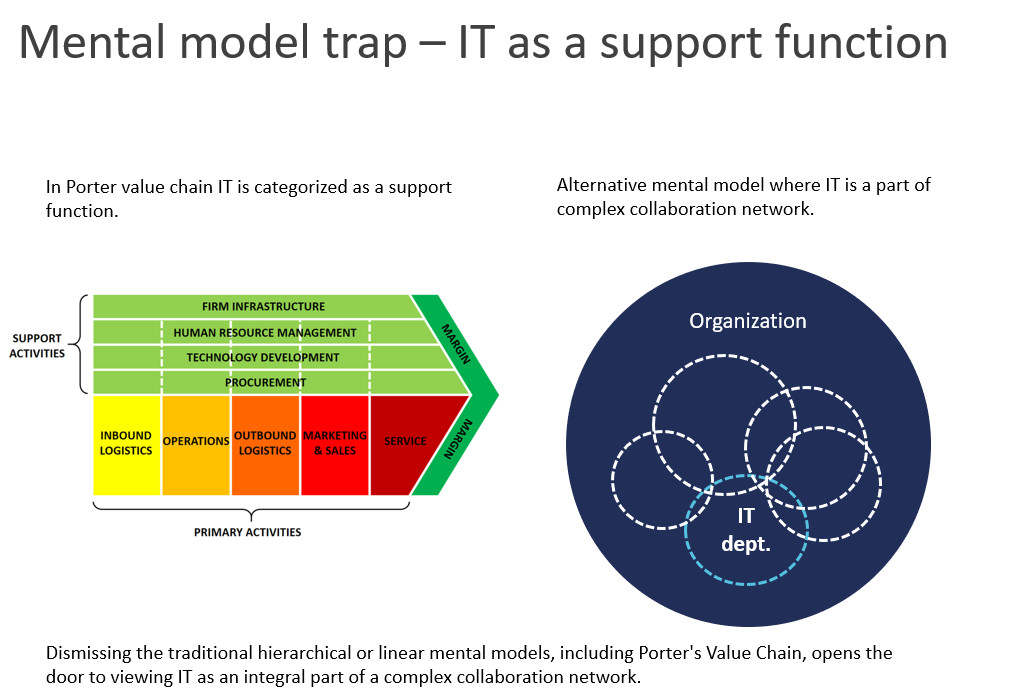In 1985, Michael Porter introduced the concept of the value chain, which later became a widely used model for various value-based concepts. However, in that era, the IT landscape was vastly different from what it is today. Concepts like value from service delivery and consumption have now become the de-facto default models for value creation.
Fast forward almost 40 years, and we find ourselves in a developmental stage that demands a critical re-evaluation of the Porter value chain, especially in terms of defining the internal IT role. Back in the 1980s, the role of IT was marginal and not well-established. IT was considered a support function, a rational categorization when it started supporting existing business processes. However, in the 2020s, this perspective is outdated, especially in organizations where IT is a crucial enabler or even a critical component for the business.
Take, for instance, insurance companies that operate primarily through IT-enabled new business models, such as online insurance without any personal contact. Depicting IT as merely a support function oversimplifies its significance in the modern organizational landscape.
It’s time to unlearn thinking about IT as a support function and embrace more relevant models. Today’s organizations can be described as complex collaboration networks without strictly defined borders between departments. Adopting collaboration and collective responsibilities better reflects the realities of today’s world.
Collaboration networks thrive on active-active relationships, where organizational digital capabilities result from combined efforts of many individuals sharing resources (time, mental effort), knowledge, and aiming to achieve shared organizational goals. Transactional overhead can be minimized by eliminating the idea of internal customers, internal services, and internal Service Level Agreements (SLAs), which may be obsolete for collaboration within an organization.
Here are some practical steps for this paradigm shift:
- Critically reconsider whether ‘IT as a support function’ is still relevant in your organization.
- Remove internal barriers, as the concept of an ‘internal customer’ may no longer be applicable.
- Shift from transactional thinking to a collaboration model.
- Adopt management principles supporting the existence of knowledge work.
- Recognize the shift in value creation from reactive fulfillment to proactive innovation and organizational capabilities.
- Recognize the value of qualitative metrics that better represent capabilities focus.
- Shift focus from customer experience (CX) to embracing collaboration experience (CLX)
For example, the Digital Capabilities Management Model (DCMM) can serve as a modernization alternative for how internal IT is managed, introducing new management patterns.
In conclusion, long-held beliefs should be regularly examined for their relevance. At a certain point, a paradigm shift becomes inevitable as progress and new realms transform the way things work, including IT management.
